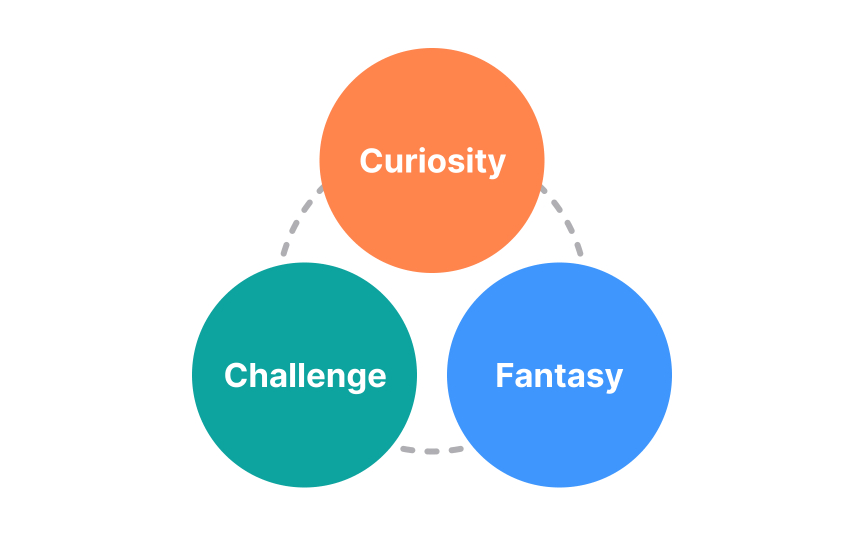Malone’s theory of intrinsically motivating instruction
In the 1980s, Thomas Malone explored what makes games enjoyable and motivational, identifying three key elements: challenge, fantasy, and curiosity. These elements are also essential in gamification, where game-like elements are used to enhance learning and engagement.
- Challenge: A challenge involves goals with uncertain outcomes, creating an engaging environment through variable difficulty levels, hidden information, and randomness.
- Fantasy: Fantasy engages learners by evoking mental images of things not present to the senses. In gamified learning, for example, turning a history lesson into an interactive adventure where students explore ancient civilizations.
- Curiosity: Curiosity is stimulated by providing an environment with optimal informational complexity. Sensory curiosity involves changes in stimuli like light and sound, while cognitive curiosity arises when users see their knowledge as incomplete.

